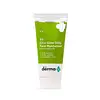What's inside
What's inside
 Key Ingredients
Key Ingredients

 Benefits
Benefits

 Concerns
Concerns

No concerns
 Ingredients Side-by-side
Ingredients Side-by-side

Water
Skin ConditioningCentella Asiatica Extract
CleansingCyclopentasiloxane
EmollientGlycerin
HumectantCaprylic/Capric Triglyceride
MaskingArbutin
AntioxidantGlycyrrhiza Glabra Root Extract
BleachingTranexamic Acid
AstringentOlea Europaea Fruit Oil
MaskingCetearyl Alcohol
EmollientDicetyl Phosphate
EmulsifyingCeteth-10 Phosphate
CleansingDimethicone
EmollientDimethicone Crosspolymer
Emulsion StabilisingPEG/PPG-18/18 Dimethicone
EmulsifyingHydrolyzed Verbascum Thapsus Flower
AntioxidantXylitylglucoside
HumectantAnhydroxylitol
HumectantXylitol
HumectantCarbomer
Emulsion StabilisingBeta Vulgaris Root Extract
Skin ConditioningTocopheryl Acetate
AntioxidantPhenoxyethanol
PreservativeEthylhexylglycerin
Skin ConditioningCitric Acid
BufferingSodium Benzoate
MaskingPotassium Sorbate
PreservativeSodium Hydroxide
BufferingPentaerythrityl Tetra-Di-T-Butyl Hydroxyhydrocinnamate
AntioxidantWater, Centella Asiatica Extract, Cyclopentasiloxane, Glycerin, Caprylic/Capric Triglyceride, Arbutin, Glycyrrhiza Glabra Root Extract, Tranexamic Acid, Olea Europaea Fruit Oil, Cetearyl Alcohol, Dicetyl Phosphate, Ceteth-10 Phosphate, Dimethicone, Dimethicone Crosspolymer, PEG/PPG-18/18 Dimethicone, Hydrolyzed Verbascum Thapsus Flower, Xylitylglucoside, Anhydroxylitol, Xylitol, Carbomer, Beta Vulgaris Root Extract, Tocopheryl Acetate, Phenoxyethanol, Ethylhexylglycerin, Citric Acid, Sodium Benzoate, Potassium Sorbate, Sodium Hydroxide, Pentaerythrityl Tetra-Di-T-Butyl Hydroxyhydrocinnamate
Water
Skin Conditioning3-O-Ethyl Ascorbic Acid
Skin ConditioningGlycerin
HumectantIsodecyl Neopentanoate
EmollientCetearyl Olivate
Sorbitan Olivate
EmulsifyingPropanediol
SolventDicaprylyl Carbonate
EmollientC15-19 Alkane
SolventCetyl Alcohol
EmollientPolyacrylate Crosspolymer-11
Emulsion StabilisingXylitol
HumectantPhenoxyethanol
PreservativeEthylhexylglycerin
Skin ConditioningSaccharide Isomerate
HumectantCitric Acid
BufferingSodium Citrate
BufferingBetaine
HumectantDisodium EDTA
EDTA
Water, 3-O-Ethyl Ascorbic Acid, Glycerin, Isodecyl Neopentanoate, Cetearyl Olivate, Sorbitan Olivate, Propanediol, Dicaprylyl Carbonate, C15-19 Alkane, Cetyl Alcohol, Polyacrylate Crosspolymer-11, Xylitol, Phenoxyethanol, Ethylhexylglycerin, Saccharide Isomerate, Citric Acid, Sodium Citrate, Betaine, Disodium EDTA, EDTA
Ingredients Explained
These ingredients are found in both products.
Ingredients higher up in an ingredient list are typically present in a larger amount.
Citric Acid is an alpha hydroxy acid (AHA) naturally found in citrus fruits like oranges, lemons, and limes.
Like other AHAs, citric acid can exfoliate skin by breaking down the bonds that hold dead skin cells together. This helps reveal smoother and brighter skin underneath.
However, this exfoliating effect only happens at high concentrations (20%) which can be hard to find in cosmetic products.
Due to this, citric acid is usually included in small amounts as a pH adjuster. This helps keep products slightly more acidic and compatible with skin's natural pH.
In skincare formulas, citric acid can:
While it can provide some skin benefits, research shows lactic acid and glycolic acid are generally more effective and less irritating exfoliants.
Most citric acid used in skincare today is made by fermenting sugars (usually from molasses). This synthetic version is identical to the natural citrus form but easier to stabilize and use in formulations.
Read more about some other popular AHA's here:
Learn more about Citric AcidEthylhexylglycerin (we can't pronounce this either) is commonly used as a preservative and skin softener. It is derived from glyceryl.
You might see Ethylhexylglycerin often paired with other preservatives such as phenoxyethanol. Ethylhexylglycerin has been found to increase the effectiveness of these other preservatives.
Glycerin is already naturally found in your skin. It helps moisturize and protect your skin.
A study from 2016 found glycerin to be more effective as a humectant than AHAs and hyaluronic acid.
As a humectant, it helps the skin stay hydrated by pulling moisture to your skin. The low molecular weight of glycerin allows it to pull moisture into the deeper layers of your skin.
Hydrated skin improves your skin barrier; Your skin barrier helps protect against irritants and bacteria.
Glycerin has also been found to have antimicrobial and antiviral properties. Due to these properties, glycerin is often used in wound and burn treatments.
In cosmetics, glycerin is usually derived from plants such as soybean or palm. However, it can also be sourced from animals, such as tallow or animal fat.
This ingredient is organic, colorless, odorless, and non-toxic.
Glycerin is the name for this ingredient in American English. British English uses Glycerol/Glycerine.
Learn more about GlycerinPhenoxyethanol is a preservative that has germicide, antimicrobial, and aromatic properties. Studies show that phenoxyethanol can prevent microbial growth. By itself, it has a scent that is similar to that of a rose.
It's often used in formulations along with Caprylyl Glycol to preserve the shelf life of products.
Water. It's the most common cosmetic ingredient of all. You'll usually see it at the top of ingredient lists, meaning that it makes up the largest part of the product.
So why is it so popular? Water most often acts as a solvent - this means that it helps dissolve other ingredients into the formulation.
You'll also recognize water as that liquid we all need to stay alive. If you see this, drink a glass of water. Stay hydrated!
Learn more about WaterXylitol is a humectant and prebiotic. It can help with dry skin.
In studies, xylitol has been shown to improve dry skin. It decreased transepidermal water loss, or when water passes through the skin and evaporates. Xylitol also showed to help improve the biomechanical properties of the skin barrier.
The prebiotic property of xylitol may also help reinforce our skin's natural microbiome. Having a healthy microbiome prevents infection by bad bacteria and helps with hydration.
As a humectant, Xylitol helps draw moisture from both the air and from deeper skin layers. This helps keep skin hydrated.
Xylitol is a sugar alcohol and commonly used as a sugar substitute. It is naturally occurring in plants such as strawberries and pumpkin.
Learn more about Xylitol